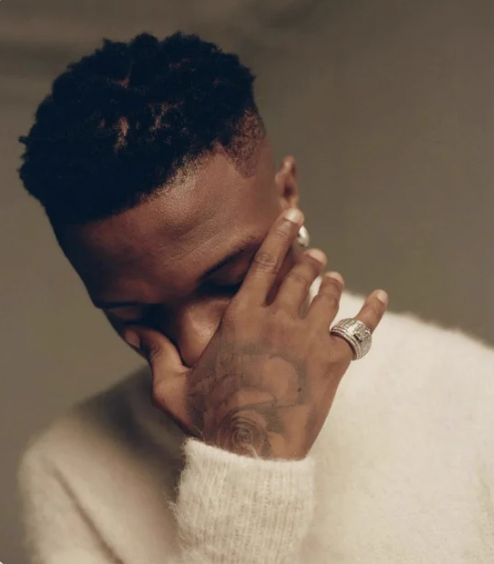If music is reflective of the desires of its listener base, then the Billboard Top 100 dutifully provides a comprehensive record of the ever-changing social landscape. Gone are the days of the protest-laden, peace-touting rock ballads of the 60s, catchy yet soulful Motown records of the 70s or the disaffected suburbanite grunge 90s — those are the sounds of yesteryear. Even K-pop, with its high-budget production and mesmerizing choreography, has plateaued in popularity.
One genre stands out as a forceful newcomer, though: afrobeats.
Less a particular sound than an umbrella term describing a loosely associated grouping of West African pop music, the afrobeats genre announced its ascension from widespread prominence to global dominance after Rema and Selena Gomez’ “Calm Down” reached one billion streams on Spotify on Sept. 11 the afrobeats genre originally hail from Nigeria and Ghana and have since spread throughout West Africa and the world.
The genre has reached new heights after its initial budding stages in the 2000s behind an exciting young generation of musicians such as Burna Boy, Tems, Wizkid and CKay.
Characterized by a colorful cosmopolitanism, afrobeats succeeds in blending its diverse styles into an undeniably irresistible flow. Polyrhythmic drum loops punctuate lush, warm chords to cultivate a complexity seldom found in today’s pop hits, while velvety vocals envelop the production to develop a signature smoothness. By balancing innovation with danceability, afrobeats has found its way into a uniquely exciting place in music today — and into headphones and subwoofers across the globe.
Perhaps more crucially, however, is afrobeats’ ability to leverage syncretism as its driving force. West African artists have blended overseas influences with local musical traditions for decades, with Nigerian afrobeat — the non-plural, Fela Kuti-led cousin of our focus today — and Ghanaian hiplife emerging as prominent genres in the late 20th century. Stars such as Fela Kuti and Obrafour have managed to achieve international success, giving a preview of the landscape today.
Wider access to worldwide music, with the development of the Internet and social media, gave rise to the influx of hip-hop, R&B, house and other forms of Black music back into Africa. Streaming platforms gave rise to online ecosystems that far surpassed traditional markets in terms of breadth and availability, allowing musicians to amalgamate the varied sounds from centuries of the African cultural diaspora with fame as fuel and ingenuity as glue.
This cross-pollination of influences also allowed for afrobeats’ decentralized development. Even as Nigeria and Ghana quickly became cradles for the genre’s evolution, afrobeats extended beyond traditional barriers as speakers of Yoruba, Twi, Hausa and dozens of other languages began experimenting with original interpretations of the same source material. Musicians in the U.K., the United States and the Caribbean also increasingly drew from West Africa’s rich cultural heritage, creating a virtuous cycle of innovation across a global network.
It is only natural, then, that afrobeats’ rise in popularity is heavily connected to the same digital tools — namely, online streaming — that once spurred its initial development. Figures such as Fuse ODG, D’Banj, Davido and Aya Nakamura were instrumental in the genre’s early breakthrough across Europe in the 2010s, pioneering their iTunes leaderboard successes with viral dancing YouTube videos.
Superstars such as Drake and Beyoncé helped catapult afrobeats into the limelight with high-profile collaborations such as “One Dance” and the soundtrack of “The Lion King,” creating extra buzz on social media surrounding the genre. In recent years, TikTok has become the new bastion of afrobeats, sparking dance crazes to songs such as CKay’s “Love Nwantiti.”
Unsurprisingly, companies have been clamoring to tap into West African markets for their huge potential, thus pouring investments into expanding the footprint of record labels, streaming services and other entertainment industry ventures. Billboard began tracking the top afrobeats songs in the United State in 2022, while Burna Boy and Asake have sold out U.S. stadiums, highlighting the genre’s warm reception stateside. Across Africa, companies such as Audiomack, Spotify and Universal Music Group have set up offices and partnered with local streaming services and record labels to scout and invest in new talent.
As afrobeats continues its rise to the top of the charts, the genre will most likely be splintered into more detailed subcategories to accurately reflect different trends and directions within the larger umbrella. In the same way that hip-hop contains wildly different styles from drill to boom bap, afrobeats’ continued success will create extra room for further experimentation and diversification, potentially sapping the term of its significance as more niche specifications emerge.
Until then, afrobeats is the moment. The genre is the natural musical endpoint of a perfect storm of increased music accessibility, worldwide cultural diffusion and social media clout, blossoming out of a defiance of previous social norms with its ubiquitously jovial, energetic sound — the perfect encapsulation of a hopeful digital multiculturalism.















